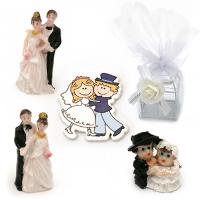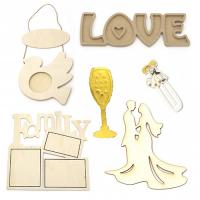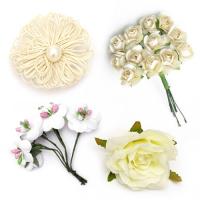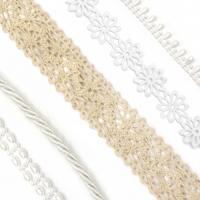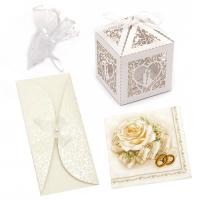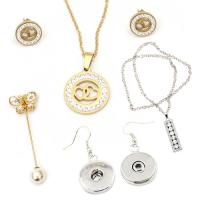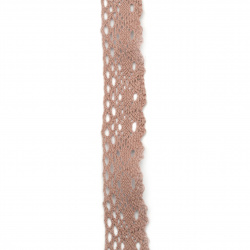Wedding Decorations and DIY Favors
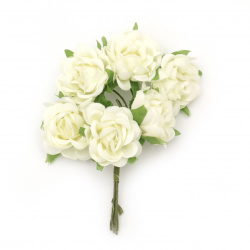
Textile bouquet of Roses for handmade decoration, weddings , 100x35 mm curly color champagne - 6 pieces
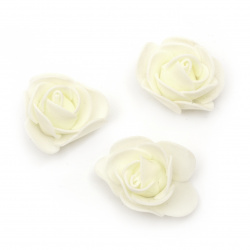
Rose color 35 mm rubber color champagne -10 pieces
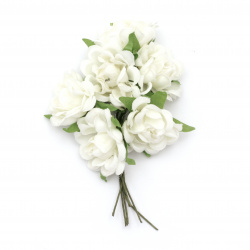
Artificial daisy bouquet from textile for decorations of albums, frames 100x35 mm curly color white - 6 pieces

Script Wooden Words: "Family" 285x80x30 mm with stand

Elements for decoration cup 7x22 mm -14 grams
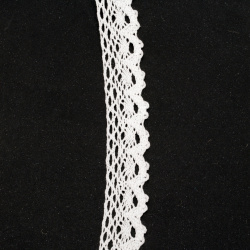
Cotton Lace Border Ribbon for Decoration, Wedding Clothes, Sewing, DIY Craft Gift Wrap 25mm white ~ 1.80m
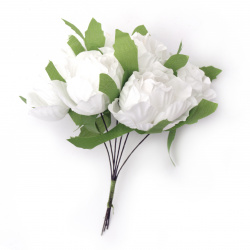
Rose bouquet textiles and wire for decoracion,weddings130x40 mm curly color white -6 pieces
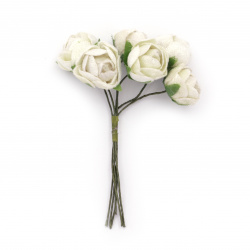
Textile bouquet roses for embellishment of tiaras, hairpins 20x100 mm color cream - 6 pieces
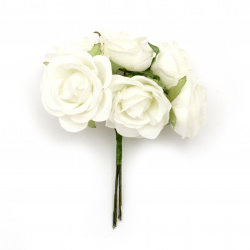
Artificial Roses for Wedding, Home Decor, Craft Projects / Champagne / 40x100 mm - 6 pieces
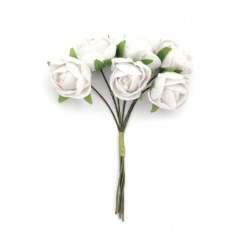
Textile bouquet roses suitable for wedding decoration 20x100 mm color white - 6 pieces
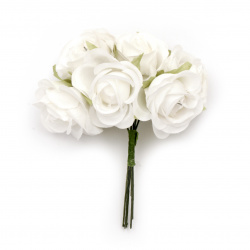
Bouquet of Fabric Roses for DIY Art and Decoration / White / 40x100 mm - 6 pieces
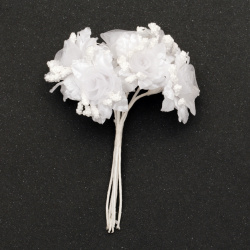
Flower bouquet textile and organza for wedding table decoration, festive cards, albums 40x110 mm color white - 6 pieces
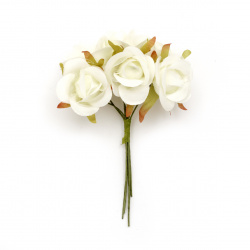
Bouquet of Textile Roses with Wire Stems / Champagne / 30x100 mm - 6 pieces
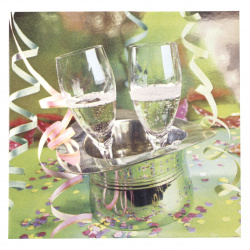
Napkin ti-flair 33x33 cm three-layer Fiesta de Ano Nuevo -1 piece
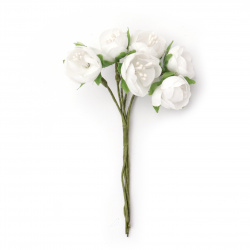
Textile bouquet Flowers with stamens 20x110 mm color white - 6 pieces
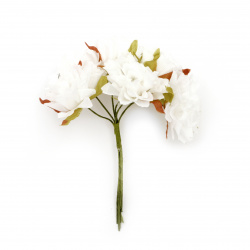
Carnation flower bouquet 35x100 mm color white - 6 pieces
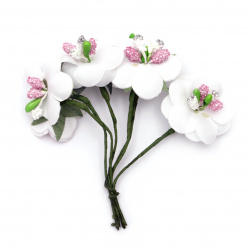
Textile bouquet Flowers with stamens 30x90 mm color white - 6 pieces
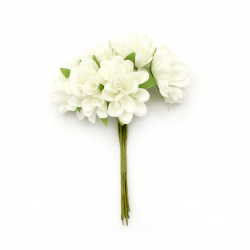
Bouquet of Carnations with Stamens / Champagne / 35x110 mm - 6 pieces
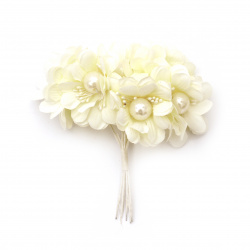
Bouquet of Artificial Flowers with Pearls / Cream / 55x120 mm - 6 pieces
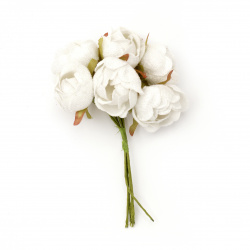
Bouquet of Fabric Roses for Bridal Accessories, Home Decor, Craft Projects / White / 30x130 mm - 6 pieces
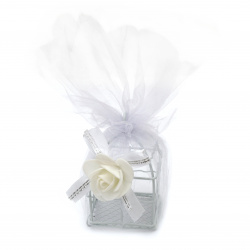
Metal box with tulle and decoration for festive decor making, wedding party 90x50x50 mm white
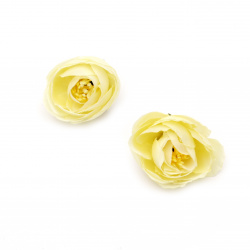
Peony Flower with Mounting Stem, 40 mm, Yellow - 5 pieces

Artificial Carnation Head for Wedding Accessories, Home Decor etc. / 45 mm / White - 10 pieces

White Foam Roses for Craft Projects and Decoration / 70x45 mm - 5 pieces

Foam rose 70x45 mm cream color - 5 pieces
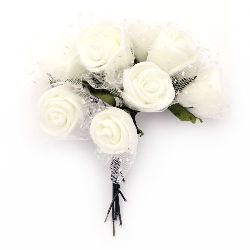
EVA Foam and organza Rose bouquet 20x90 mm with wire stems for embellishment of tiaras, hairpins, champagne - 10 pieces
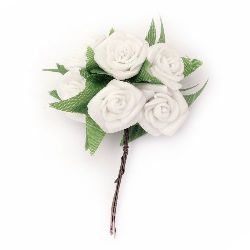
Rose rubber bouquet for embellishment of wedding cards, albums 25x90 mm white color - 6 pieces
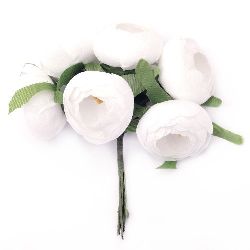
Fabric Flower Bouquet for Wedding, Baby Shower, Home Decor / White / 40x20x110 mm - 6 pieces
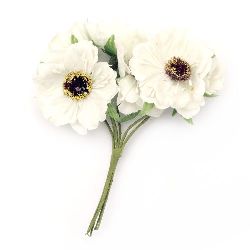
Textile bouquet Flowers with stamens 45x120 mm color champagne - 6 pieces
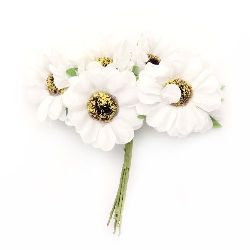
Textile bouquet Flowers with stamens 45x110 mm color white - 6 pieces
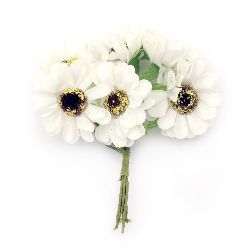
Textile bouquet Flowers with stamens 45x110 mm color champagne - 6 pieces

Bouquet Carnation flower with stamens 35x110 mm white - 6 pieces
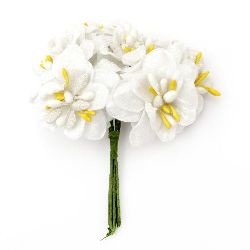
Flower bouquet textile for wedding table decoration, festive cards, albums 40x90 mm stamen white - 6 pieces
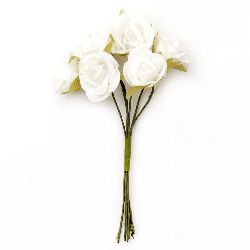
Rose bouquet textile 22x100 mm white - 6 pieces
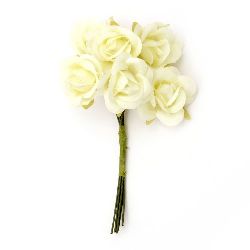
Rose textile bouquet 22x100 mm cream -6 pieces
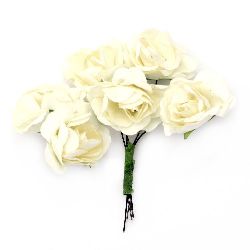
Bouquet of paper curly Roses with wire stems for decoration 35x80 mm champagne - 6 pieces

Lace Border Ribbon for Decoration, Wedding Clothes, Sewing, DIY Craft Gift Ribbon 150 mm white -1 meters
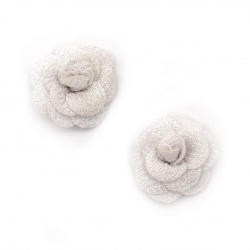
Decorative Fabric Rose, Cream Color 30mm 5pcs

Decorative Fabric Flower,Yellow Cream Color, 43mm 5pcs

Decorative Fabric Flower, Cream Color 53mm 5pcs
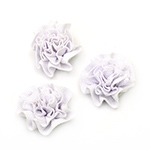
Decorative Fabric Flower, White 53mm 5pcs

Flower 53 mm with Fabric leaf white -5 pieces
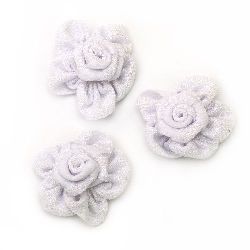
Decorative Fabric Rose, White 38mm - 5 pcs.

Decorative Fabric Rose, White 30mm 5pcs

Decorative Fabric Rose, White 20mm 10pcs
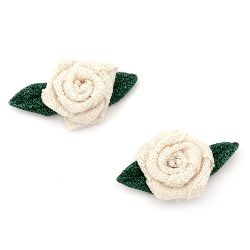
Satin Rose with Fabric Leaf, Cream Color 20mm 10pcs
WEDDING – SYMBOLISM AND TRADITIONS
What is a wedding?
A wedding is a ceremony in which two people unite in marriage. Wedding traditions and customs vary among cultures, ethnic groups, religions, countries, and social classes. Most wedding ceremonies involve the exchange of vows, wedding rings, receiving gifts (material, non-material, and symbolic), and public acknowledgment of the union by an authorized individual.
Special wedding attire is often worn, and the ceremony is followed by a reception/celebration. The wedding ceremony usually includes music, poetry, prayers, scripture readings, and other traditional displays. A song is sung during the bride’s procession. The bride refers to the groom’s parents as father-in-law and mother-in-law, and to his brother - as best man.
The preservation of life and the continuation of the family are among the most significant human values. As the wedding marks the creation of a new family, the celebration is always grand. The tradition involves the bride wearing a white dress and carrying a bouquet. She may choose to take her husband’s last name. After the ceremony, a celebration follows, and at the end, the groom and bride enjoy their wedding night.
A legal marriage in Bulgaria is officiated through a wedding ritual conducted by municipal authorities, mayors, or authorized individuals. The church marriage ritual aligns with the Eastern Orthodox Christian religion. This ritual is more of a blessing than an official marriage legalization.
10 Surprising Facts About Wedding Traditions and Their Origins
From the bouquet to the garter toss to something blue pinned to your dress—have you ever wondered where these wedding traditions come from? Probably not if you’re busy planning a wedding.
But since we are wedding enthusiasts who dream of napkin ring designs in our sleep, we’ve taken the liberty of delving deep to uncover 10 fascinating facts about wedding traditions we all thought we knew.
1. The "ring finger" is significant for a reason
Engagement and wedding rings are worn on the fourth finger of the left hand because it was once believed that a vein in this finger leads directly to the heart.
2. Why do brides wear white wedding dresses?
Queen Victoria is credited with starting the white wedding dress trend in the Western world in 1840—before that, brides simply wore their best dress.
3. Matching bridesmaids bring good luck
The tradition of matching bridesmaids dates back to Roman times, when it was believed that evil spirits would attend weddings to curse the couple (how rude). Bridesmaids had to dress identically to the bride to confuse the spirits and bring luck to the marriage.
4. Wedding veils have spiritual roots
Similarly, brides traditionally wear veils because ancient Greeks and Romans believed they protected the bride from evil spirits.
5. As the saying goes...
The tradition of a bride wearing "something old, something new, something borrowed, something blue" comes from an old English rhyme. Something old represents continuity, something new offers optimism for the future, something borrowed symbolizes borrowed happiness, and something blue signifies purity, love, and fidelity.
6. Let them eat cake
The wedding cake tradition originates from ancient Rome, where guests would break bread over the bride’s head for fertility.
7. Ever wonder where the phrase "tying the knot" comes from?
In many cultures around the world—including Celtic, Hindu, and Egyptian weddings—the bride’s and groom’s hands are tied together to symbolize their commitment to each other and their new bond.
8. Carrying the bride over the threshold
According to tradition, the groom carries the bride over the threshold to protect her from evil spirits lurking below.
9. June weddings are not new
The Roman goddess Juno presided over marriage and childbirth, which is why June weddings became so popular.
10. Honeymoons weren’t always luxurious
Ancient Nordic couples would hide after their wedding, and a family member would bring them a cup of honey wine every day for 30 days—or one moon cycle—hence the term "honeymoon."
Why do people get married?
It’s not uncommon for engaged couples to wonder why people marry while choosing the perfect wedding dress, debating invitation wording, and worrying about guest etiquette. Marriage is more than just a fancy party or a sparkly ring; understanding why people marry can ensure couples make the right choice as they plan their special day.
Seven Reasons Couples Get Married
Each couple has unique reasons for tying the knot, but many share similar motivations for planning a long walk down the aisle. Whether emotional, legal, financial, or a combination of these, recognizing why marriage is important helps couples understand the commitment they’re making to their long-term relationship.
1. Most people marry for love
For many couples, emotional reasons are the most apparent motivation for getting married. According to the Pew Research Center, 88% of the general public states that love is the primary reason they decided to tie the knot. It’s the number one reason cited by respondents.
2. Financial benefits
Some marry for financial advantages
Marriage can be practical for financial reasons. According to U.S. News & World Report, couples who cohabit but are not married earn only 61% of what married couples do. Financial benefits of marriage can include:
- Tax advantages associated with marriage.
- Legal commitments that provide financial security for children.
- Shared property, inheritance, retirement accounts, and other financial benefits.
3. Health insurance
Health insurance is another motivator for marriage. Sharing a family or couple’s health insurance plan can be cost-effective and encourage some to walk down the aisle.
The Centers for Disease Control and Prevention report that married adults between the ages of 18 and 64 are more likely to be insured than their unmarried counterparts. According to CDC data, 74.5% of insured married couples had private insurance, often through an employer.
4. 41% marry to have children
Pew Research Center data also suggests that having and raising children motivates many people to commit to marriage. According to the study, 41% of respondents cited having children as a primary reason for marrying.
Princeton University’s Future of Children report states that children born into married households benefit in the following ways:
- More time with parents
- Higher household income
- Better access to health insurance
- More stable home environment
- Better parental supervision
However, these benefits apply only when children are raised in healthy, stable family environments. Marriage does not guarantee these advantages.
5. Legal reasons
Legal benefits are a major motivator for 23% of couples, according to Pew Research Center.
Legally married couples enjoy hospital visitation rights and can make caregiving decisions with fewer bureaucratic hurdles. Parental and property rights are also easier to manage for married couples, including sick leave, next-of-kin rights, and homeownership.
In some cases, citizenship may also play a role in the decision to marry.
Religious reasons influence nearly one-third of couples.
According to the Pew Research Center, About 30% of couples cite religious reasons for marrying. In some faiths, couples are not considered married if they complete only a civil ceremony—a religious ceremony is required to confirm their union in God’s eyes.
Couples who share the same or similar faith may wish to honor their relationship with this religious connection, or if they have differing beliefs, they might plan an interfaith wedding to combine their spiritualities.
6. Societal expectations
While statistics don’t quantify how many couples marry due to societal expectations, it’s undeniable that many couples feel pressure from peers, parents, relatives, or other married friends, particularly if they already have children or plan to start a family. Singles may also feel pressured to "settle down" and marry, and for some, the allure of a party to celebrate their union is motivation enough to tie the knot.
7. More than love
While love may be the primary reason people marry, it isn’t the only one. Generally, couples commit to spending their lives together for multiple reasons. Each couple chooses marriage because it fulfills their needs and supports their values and dreams.
EM ART’s Wedding Planning Guide
First: Wedding planning can sometimes feel overwhelming. While couples often hire professionals to help manage their wedding plans, there are plenty of reasons they might also take on most of the responsibilities themselves. Whether working with a limited budget or simply loving all the DIY opportunities, it’s possible to plan the wedding of your dreams independently.
Organization is key to keeping everything on track, with decisions, lists, timelines, and day-to-day routines to manage. The first step is allowing yourself enough time to plan the wedding. A longer timeline is your friend here—aim for about a year, if possible. Don’t forget to involve your partner in this step. Your wedding should represent both of you together as a couple.
So, where to start? Just keep one essential thing in mind: Have fun! After all, this is your wedding. Don’t stress over the small details and focus on what really matters: celebrating the love you share and getting married surrounded by your friends and family.
Here are our 10 top tips for planning your wedding, from staying organized to navigating the legalities and maintaining your mental health.
1. Determine your wedding budget—and stick to it
Your wedding budget will be the driving factor for many of your wedding-related decisions, so this should be one of the first things you address. If family members are contributing, discuss what they’re comfortable spending.
If you’re footing the bill yourself, it’s time to take a hard look at your finances. Be prepared for a reality check when budgeting for your big day, as many couples don’t realize the full scope of associated costs. Once you have that magic number, stick to it!
2. Create a list of wedding day priorities
Sit down with your partner and identify your top three priorities for the wedding. Is it the venue or a specific wedding date? Securing a particular photographer or live band? Prioritize these details and be willing to compromise on the rest. This will help you stay within your budget and focus your efforts on what truly matters.
3. Define your bridal style
Find a few sources of bridal inspiration that resonate with you—Pinterest, Instagram, magazines, trusted bridal websites (including Brides, of course!)—and start exploring. Having a clear idea of the wedding style you want is incredibly helpful when meeting with potential vendors.
Don’t get overwhelmed by all the wedding inspiration out there. Creating one or more Pinterest boards—or even a visual collage on a corkboard or poster board—will help you focus on what type of look and feel you truly want and keep you aligned with your overall vision.
4. Stay organized
You can use checklists, spreadsheets, Word, Excel, Google Docs—whatever works best for you—as long as you can gather all your thoughts, budgets, numbers, etc., in one place. There are also fantastic online tools and apps to help you stay organized.
5. Involve your partner
Don’t feel like you’re tackling this wedding planning process alone. Consult your partner along the way—their input will undoubtedly be invaluable, and—even if they’re only involved in some aspects—it makes planning much more enjoyable when decisions are made together. Working towards a shared goal brings you closer as a couple, and helps you grow as a team as you solve problems together.
6. Get a wedding planning book
For couples opting to handle the wedding planning process without a professional planner or coordinator, a traditional etiquette and planning guide (like a wedding book) is a wealth of information and expert advice, including tips, tricks, and even examples of timelines and checklists.
7. Create a master checklist
Review your master wedding planning checklist and timeline to stay on track and tackle tasks like a pro. (Feel free to tailor it to your needs, if necessary). This will help you visualize and prioritize goals without becoming overwhelmed by everything at once.
8. Consider dates (and seasons)
Choose a few ideal dates for your wedding and try to be flexible if possible, so you’re not restricted when booking your venue and vendors. Take external factors into account, like how popular those dates might be for other couples (making availability scarce and prices higher), if the dates will be challenging for your guests to attend, and the differences in venue and vendor pricing between seasons.
9. Choose a theme
Whether it’s specific wedding colors, seasonal or style inspiration, or an actual theme (like "Roaring Twenties" or "Festival Chic," for example), it can be helpful to have a concept to design your wedding around. Once you have an aesthetic in mind, it’s easier to make design decisions, and everything generally feels more cohesive.
10. Consider a venue that simplifies planning
In wedding jargon, an off-site wedding is one where the venue lacks a commercial kitchen, and you’ll need to bring everything in—think places like parks, public beaches, even open fields.
On the other hand, an on-site wedding—somewhere like a hotel or restaurant—significantly simplifies the planning process since they likely offer catering packages as well as access to essentials, including a designated space, chairs, tables, and possibly even an on-site coordinator to assist you.

